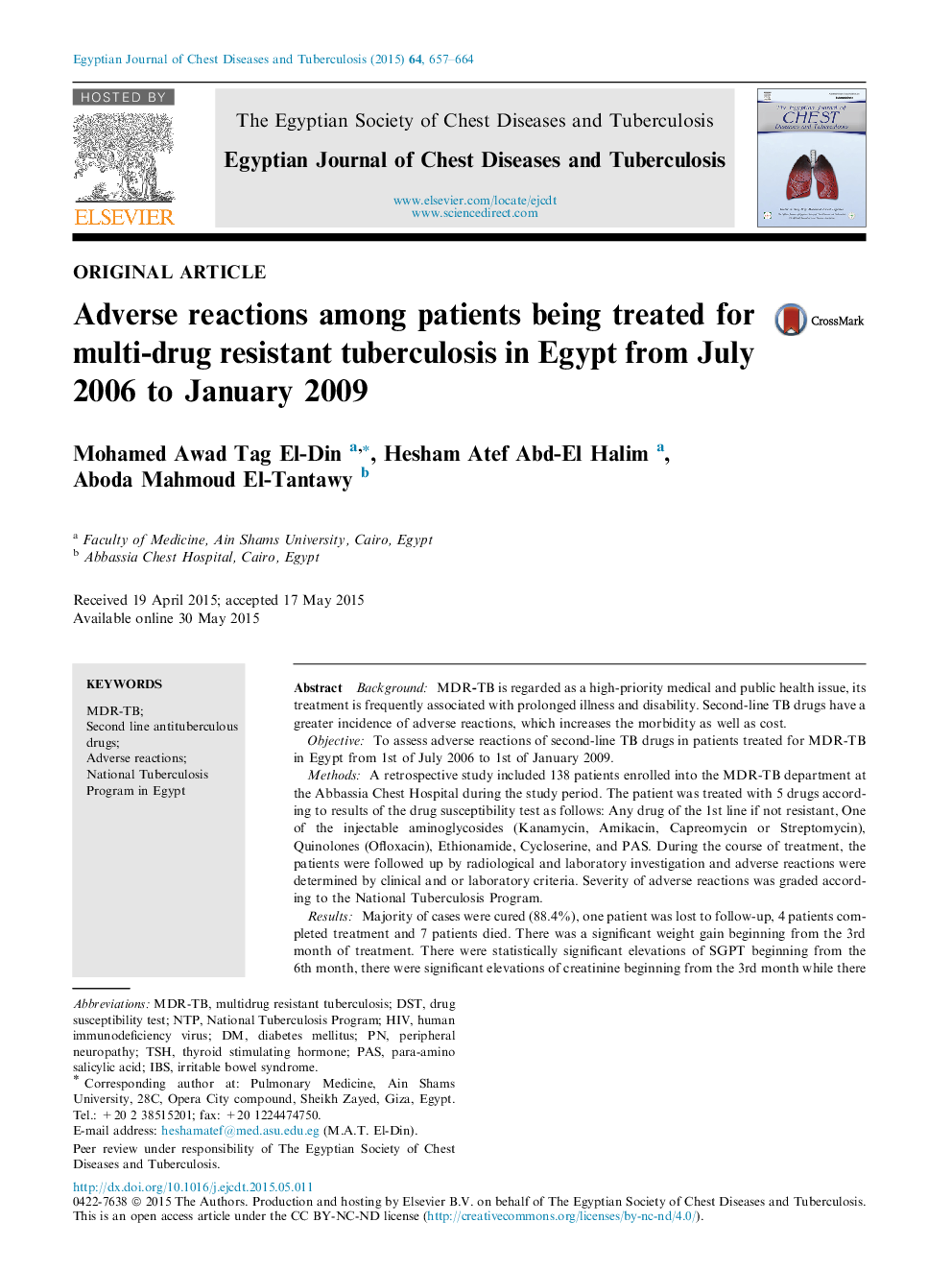| Article ID | Journal | Published Year | Pages | File Type |
|---|---|---|---|---|
| 3400027 | Egyptian Journal of Chest Diseases and Tuberculosis | 2015 | 8 Pages |
BackgroundMDR-TB is regarded as a high-priority medical and public health issue, its treatment is frequently associated with prolonged illness and disability. Second-line TB drugs have a greater incidence of adverse reactions, which increases the morbidity as well as cost.ObjectiveTo assess adverse reactions of second-line TB drugs in patients treated for MDR-TB in Egypt from 1st of July 2006 to 1st of January 2009.MethodsA retrospective study included 138 patients enrolled into the MDR-TB department at the Abbassia Chest Hospital during the study period. The patient was treated with 5 drugs according to results of the drug susceptibility test as follows: Any drug of the 1st line if not resistant, One of the injectable aminoglycosides (Kanamycin, Amikacin, Capreomycin or Streptomycin), Quinolones (Ofloxacin), Ethionamide, Cycloserine, and PAS. During the course of treatment, the patients were followed up by radiological and laboratory investigation and adverse reactions were determined by clinical and or laboratory criteria. Severity of adverse reactions was graded according to the National Tuberculosis Program.ResultsMajority of cases were cured (88.4%), one patient was lost to follow-up, 4 patients completed treatment and 7 patients died. There was a significant weight gain beginning from the 3rd month of treatment. There were statistically significant elevations of SGPT beginning from the 6th month, there were significant elevations of creatinine beginning from the 3rd month while there were no significant changes in serum Potassium levels. Gastrointestinal manifestations were the most frequent adverse reaction, followed by PN, hypokalemia, IBS, Ototoxicity, Hypothyroidism, Skin manifestations, Hepatotoxicity then by nephrotoxicity. Hyponatremia and dizziness were the least adverse reactions, the majority of adverse reactions did not affect daily activity of the patients. There was a significant relation between smoking and peripheral neuropathy while there were no significant relation between smoking, DM and used antituberculosis drugs with the other adverse reactions.ConclusionThe most common type of resistance was acquired resistance, There was a relation between both tobacco smoking and drug addiction, and MDR TB, The most common side effect of anti TB drugs was GIT manifestations and the least complication was dizziness. Adverse reactions did not negatively impact treatment outcome among individuals who were adherent to treatment.
